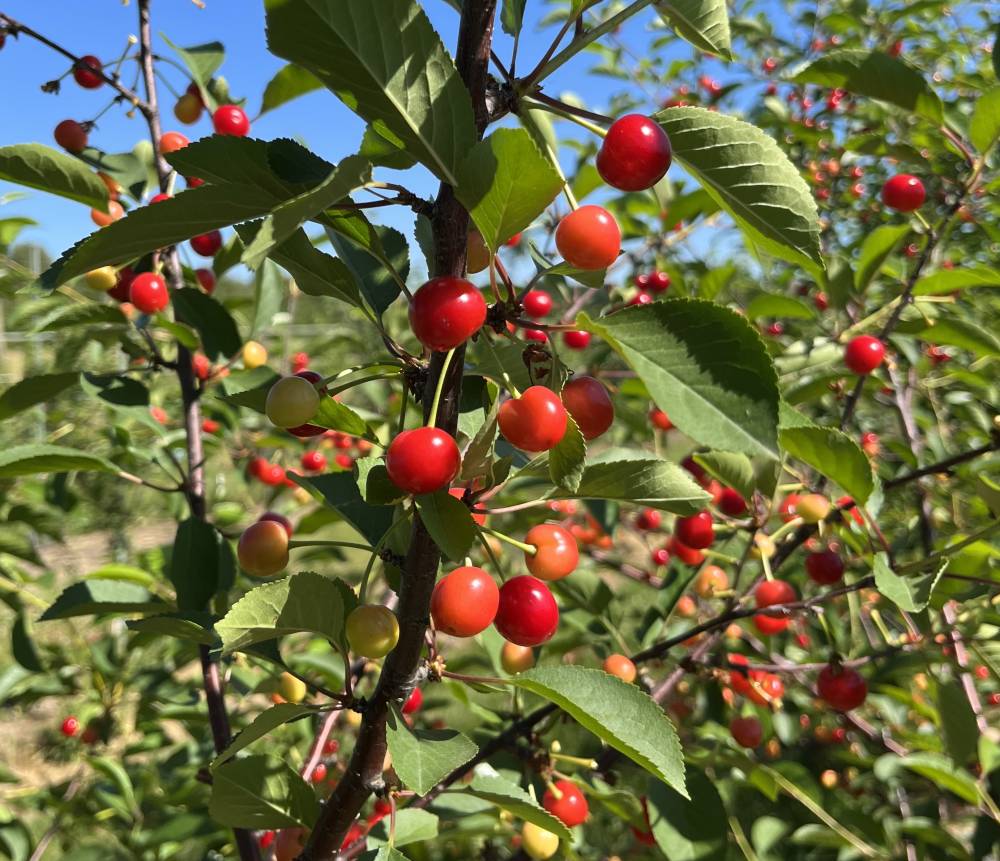INTA Santa Cruz promotes the application of technologies to obtain quality fruit and reduce losses. Producers in the region who have incorporated the improvements have managed to double the fruit yield per hectare and obtained the province's first Denomination of Origin.
In favourable seasons, around 1,200 tonnes of cherries are exported from Southern Patagonia each year. Those produced in the locality of Los Antiguos - Santa Cruz - are sweeter and juicier fruits, with a good texture, crispness and a final acidity that is not intense.
For this reason, an INTA team conducted cherry-growing experiments on the phenological characterisation of the different varieties, the use of bees for pollination, harvesting and post-harvest handling, and finally, value addition. Producers in the region have incorporated improvements in production levels with yields close to 15 tonnes of fruit per hectare.
The cherries produced in the Los Antiguos Valley area are the last to be harvested in the Southern Hemisphere, usually starting in late December and ending in mid-February. These crops have a longer fruit formation period, 73 to 103 days, compared to 50 to 85 days for cherries in other parts of the country and the world.
Liliana San Martino - extender of the Los Antiguos Rural Extension Agency, INTA Santa Cruz - pointed out that 'local producers and processors, as well as those who buy cherries all over the world, describe them as sweeter than others, with a good texture and crispness, non-intense final acidity and juiciness'.
The main varieties used in the region are Sweetheart, Kordia, Lapins, Regina, Skeena and Bing. Due to their differentiated quality, these cherries have obtained the province's first Denomination of Origin, which also has the Geographical Identification of Patagonian Lamb along with other Patagonian provinces.
"This certification is a tool that differentiates the quality of a product associated with its origin, in this case linked to the quality of the natural resources of the place and local production practices linked to history and culture," San Martino explained.
He added that 'it also provides a legal framework for the product and thus prevents misuse of the label. This is important to strengthen the production sector and packaging facilities. On the other hand, it represents recognition for these cherries, as they pay a discount of 0.5 per cent - compared to the declared selling price - if the boxes bear the logo'.
The geographical location gives the cherries a superior nutritional and sensory quality, as they have a higher colour development and firmness, as well as a better functional quality in terms of antioxidant capacity, among other things.
Most of the fruit produced in Patagonia is exported; in a good year like the 2021-2022 season, around 1,200 tonnes of cherries were exported, while in a not-so-good year like the previous 2022-2023 season - due to frost problems - around 490 tonnes were exported.
INTA's Rural Extension Agency (AER) team in Los Antiguos is helping to improve harvest and post-harvest practices, for example by identifying when fruits are bruised and proposing improvements that have been adopted by producers and packing plants. Also in relation to fruit quality and how to improve it through handling.
San Martino described: 'In terms of forest management, pruning, fertilisation, irrigation and pollination practices have been adapted, allowing producers to incorporate improvements in production levels.
These results are not exclusive to the contribution of INTA, but also of the producers themselves and private technical consultants, however yields have increased from less than 8,000 kilograms of fruit per hectare to 15,000, although not everyone achieves this quantity because they cannot always apply the full technological package.
As far as pruning is concerned, the aim is to allow sunlight to reach all parts of the tree to positively influence the quality of the fruit, to renew aged branches (winter pruning) and to cut back to control vigour (summer pruning).
An important point of management is fertilisation. Since the soils in the area are poorly developed and nutrient-poor, fertilisation is necessary. Doses are adjusted annually and the influence of nutrients on fruit quality is taken into account, e.g. potassium related to sugar content, calcium related to firmness.
Rainfall in Los Antiguos does not exceed 200 millimetres per year, while the cherry trees need more than 600 millimetres, so irrigation is essential. "Irrigation recommendations are made taking into account the basic evapotranspiration values provided by the meteorological stations located in the valley.
This value is corrected according to the observation of the shrub and is influenced by a crop coefficient, which varies according to the different months and the development of the crop," explained San Martino.
INTA also carries out evaluations of new varieties, which have contributed to the varietal change that has taken place in recent years and which has made it possible to extend the harvest period to mid-February, as well as to plant varieties that can withstand long journeys while maintaining good quality.
Different frost control systems were tested, allowing the best option - dispersal - to be adapted to the area, which made it easier for the grower to make a decision when to incorporate this technology. "In addition, data from the INTA weather station is provided online, which is important for defining whether or not to control frost," explained San Martino.
Finally, to reduce losses during harvest and post-harvest, appropriate technology was applied to obtain quality fruit. This work was carried out under the INTA-Cooperative El Oasis agreement.
San Martino explained that 'data from the sampling carried out by the Cooperative at the packing plant for different varieties and producers were processed. The causes of rejection - related to handling, sanitary/physiological problems and harvesting - and representative indicators of fruit quality were determined, which were related to the type of handling, i.e. with or without handling more in line with the recommendations'.
With the results obtained, it was proposed to the cooperative to agree on common exchange and planning instances to be developed together with the producers, in order to make progress in reducing losses in the following seasons.
The cherries of the Los Antiguos valley are renowned in the production sector; local knowledge and cultivation methods are the key to the quality of an activity that has been going on for more than 50 years. The human factor is decisive and the area already has three generations of producers.
Source: AgroAvances
Cherry Times - All rights reserved












